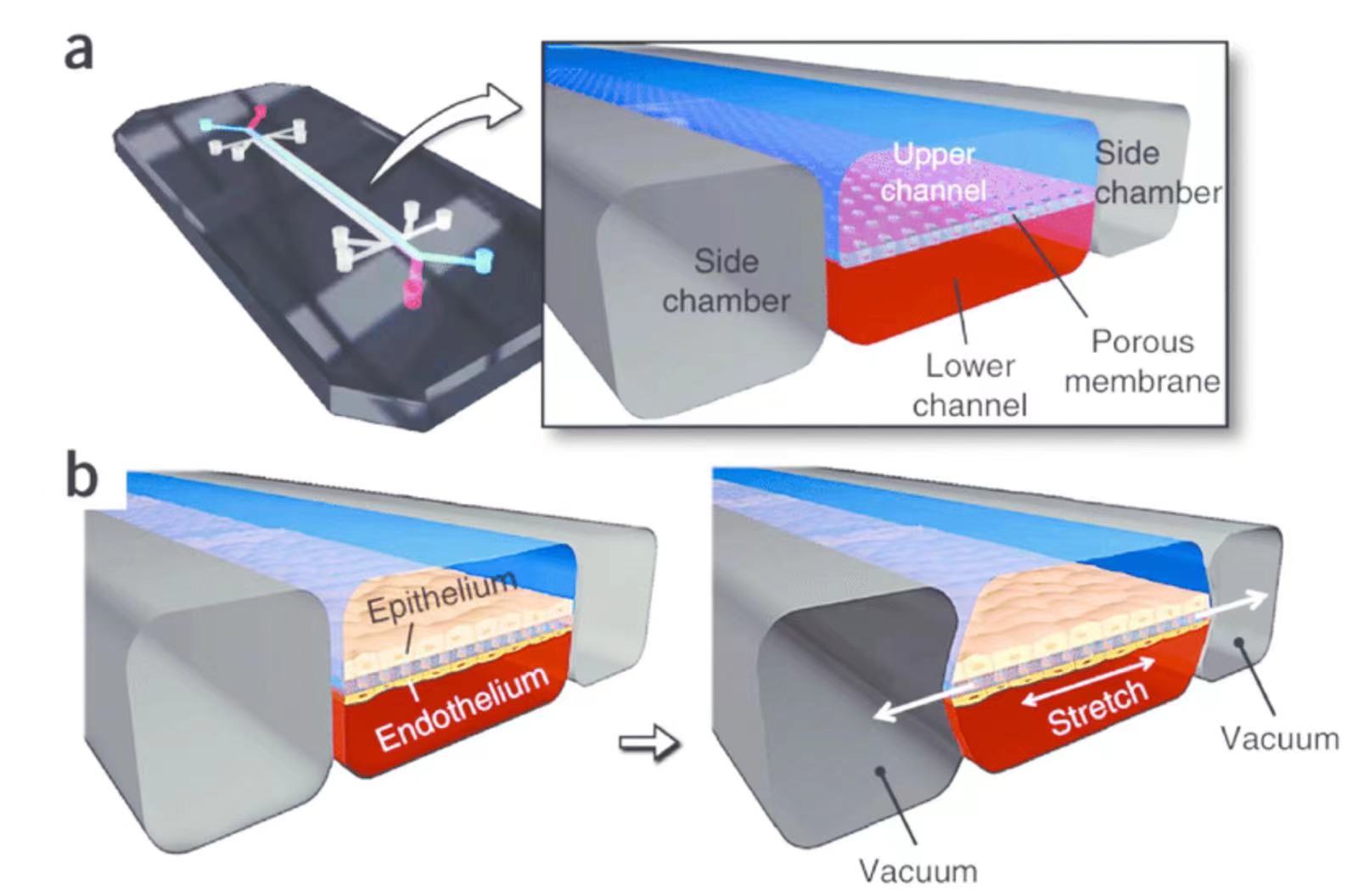PDMS (polydimethylsiloxane)
PDMS is a commonly used microfluidic chip material, its full name is polydimethylsiloxane.PDMS has the following advantages that make it a commonly used material in microfluidic chip preparation:
- Good transparency: PDMS has good transparency, which makes it easy to observe and detect the microfluidic structure and reaction process inside the chip.
- Good biocompatibility: PDMS has good biocompatibility and will not cause toxicity and damage to biological samples and cells.
- Flexible and malleable: PDMS is flexible and malleable, which makes it easy to prepare microfluidic chip structures of various shapes and sizes to suit different experimental needs.
- Chemical resistance: PDMS has good chemical resistance and can withstand many commonly used organic solvents and chemical reagents.
- Easy to process: PDMS can be prepared and processed by simple photolithography, adhesive mold pressing, and other methods at a relatively low cost.
In conclusion, PDMS is one of the commonly used materials in microfluidic chip preparation, which has the advantages of good transparency, biocompatibility, flexibility and plasticity, and chemical resistance, providing convenience and possibility for microfluidic chip research.
The commonly used PDMS materials for microfluidic chips are Meitu RTV615 and Dow Corning Sylgard184, both of them are room-temperature curing two-component silicone rubber materials used for microfluidic chip preparation, and the main differences between them are in the following aspects:
- Composition: The main components of PDMS Meto RTV615 are polydimethylsiloxane (PDMS) containing silyl and hydroxysilanes and a cross-linking agent, while PDMS Dow Corning 184 is composed of polymers containing epoxy and silicate groups and a cross-linking agent.
- Physical Properties: The physical properties of PDMS Meto RTV615 and PDMS Dow Corning 184 are also different. PDMS Meto RTV615 has a relatively low surface tension and high softness, which makes it suitable for the preparation of flexible microfluidic chips and microfluidic devices. PDMS Dow Corning 184, on the other hand, has a higher hardness and higher surface tension, which makes it suitable for the preparation of more rigid microfluidic chips and microdevices.
- Material Cost: From a cost perspective, PDMS Dow Corning 184 is more expensive compared to PDMS Mytto RTV615. Therefore, laboratories or research teams that are cost-conscious may prefer to use PDMS Mytto RTV615.
In summary, Meto RTV615 and Dow Corning 184 are different in terms of composition, physical properties, preparation process and cost, and the appropriate material needs to be selected based on the specific application requirements.

PDMS microporous films
The application of PDMS microporous membranes on organ chips is a common application. Organ chips are a platform for simulating human organs in vitro, which can be used in drug screening, disease diagnosis, tissue engineering and other fields.
PDMS microporous membranes can be used as an important component in organoids for the construction of microfluidic systems and cell culture systems.
Specifically, PDMS microporous membranes can be used to prepare components such as tissue engineering scaffolds, cell culture plates, and as filters, microseparators, and other components in microfluidic chips.
For example, in the liver chip, PDMS microporous membrane can be used as a substrate for hepatocyte culture. Hepatocytes are cultured on the surface of PDMS microporous membrane, and the microfluidic system is utilized to simulate the physiological environment in the human liver, and to study the drug metabolism, cytotoxicity, and other biological processes through the alteration of the cell culture conditions, drug addition, and other means.
In addition, PDMS microporous membranes can be used in combination with other materials (e.g., nanomaterials, metallic materials, etc.) to form more complex assemblies for realizing more sophisticated cell culture and microfluidic operations.
In conclusion, the application of PDMS microporous membranes on organ microarrays has a wide range of application prospects and can provide important technical support for drug development, disease diagnosis, tissue engineering and other fields.
Preparation of PDMS microporous membranes
- Mixing and preparation of PDMS: Mix PDMS and cross-linking agent according to a certain proportion, mix well with mechanical stirring, then put it into vacuum to remove the foam, and finally put it into the oven for curing.
- Template preparation: prepare templates with certain aperture diameters and pore spacing as needed. The templates can be prepared using micro-nanofabrication techniques such as photolithography, electron-beam exposure, and laser printing.
- Surface treatment of the formwork: The surface of the formwork is treated with a surfactant to enable it to bind tightly to the PDMS material and prevent the PDMS from penetrating into the formwork.
- Bonding of PDMS to the formwork: The cured PDMS material is cut into blocks of a certain size, placed on the surface of the formwork, and vacuumed to make it fit the surface of the formwork completely.
- Separation of PDMS from template: the bound PDMS material and template are soaked in deionized water to relax and separate them. This step can be done at room temperature or in a refrigerator.
- PDMS microporous membrane preparation: After separating the PDMS from the template, drying it in an oven, and finally removing the template using an appropriate method, PDMS microporous membranes with certain pore diameters and pore spacing can be obtained. It should be noted that the ratio of PDMS to cross-linking agent needs to be strictly controlled when preparing PDMS microporous membranes.


PDMS Film Specifications
Existing PDMS films have the following specifications, whereinPDMS microporous membrane (thickness 24um, pore size 8~10um)
| designation | Indicator parameters |
| durometer | 65 Shore A |
| tensile strength | 5.5Mpa |
| tear strength | 20KN/m |
| Elongation at break | 300% |
| modulus of elasticity | 2.3 |
| refractive index | 1.41 |
| transmittance | >95%(2nm) |
| operating temperature | -40~200 |
| cytotoxicity | none |
| dielectric strength | 12kV/mm |
| Dielectric constant (kV/mm) | 2.7 |
| bulk resistivity | 1014Ωcm |
| Thickness Specification | 25um±2um (available with microporous, pore size 8~10um) 50um±2um 100um±2um 150um±2um 200um±2um |
© 2025. All Rights Reserved. 苏ICP备2022036544号-1















